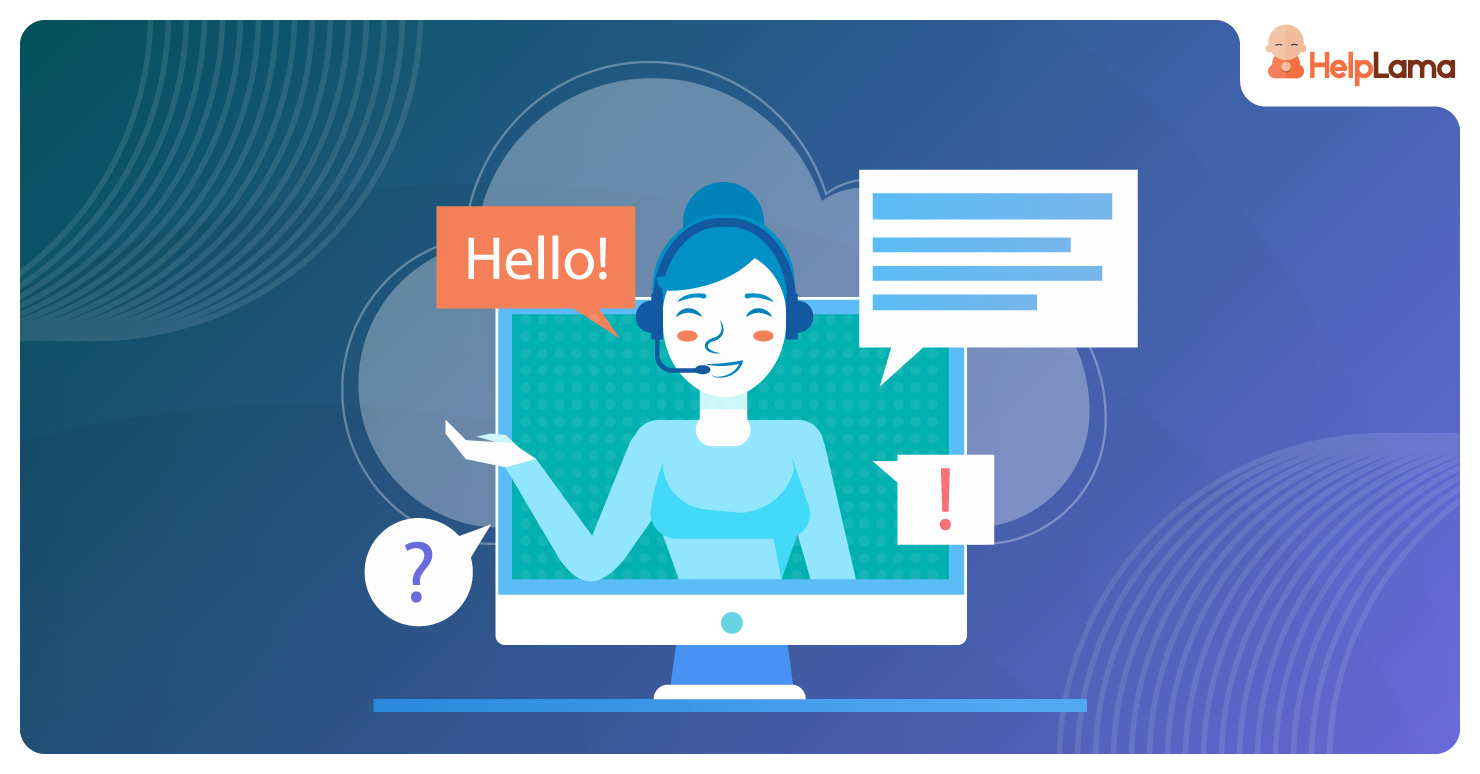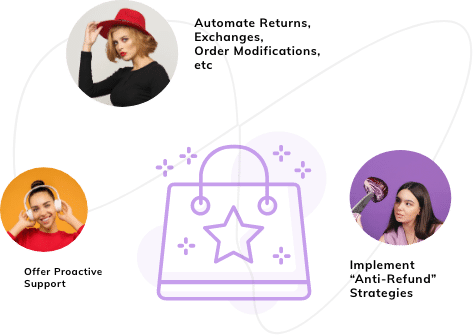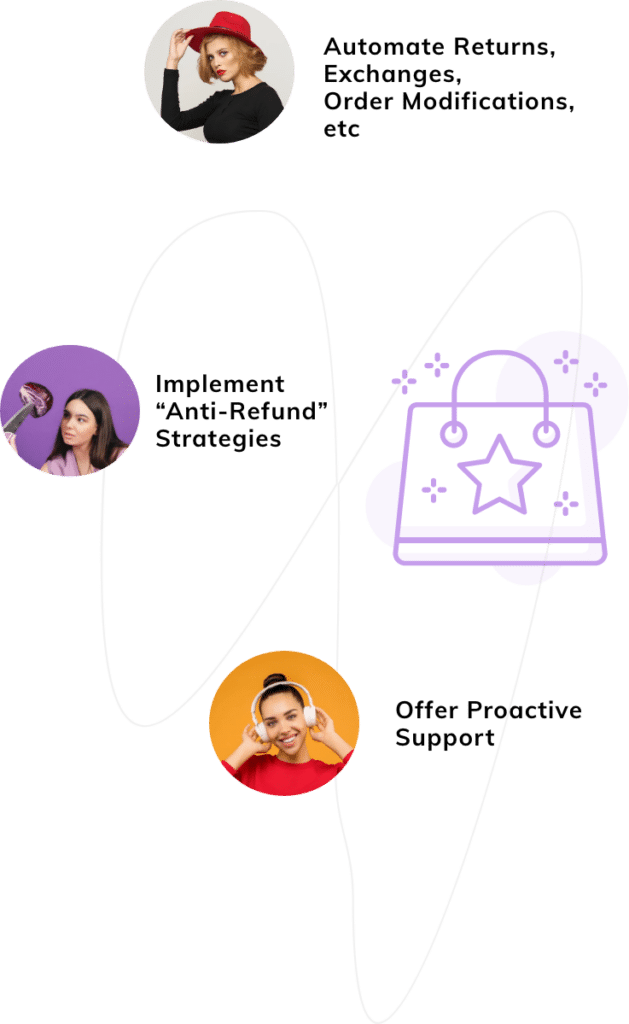Last Updated: April 2024
Over half (54%) of customers have higher expectations for customer service today compared to one year ago.
So it won’t be wrong to say that – Your company’s image is synonymous with the type of customer service that you offer. The type of interaction you have with your customers can be crucial in the overall growth of your company. Hence, you must ensure that you indulge in effective conversational conversation with your customers as much as possible.
If your company has a conversational and engaging customer interaction history, it would encourage loyalty and positive word of mouth from your customers.
In fact, for 73% of consumers, friendly employees or customer support representatives are what makes a memorable experience and cause consumers to stay loyal to the brand.
So is your customer interaction conversational enough? If not, let’s find out how to make your customer service conversational.
In this post, we will cover the following:
- What does conversational mean?
- Transactional tone vs Conversational tone
- 8 best practices for conversational customer support
What does conversational mean?
In communication, conversational can be defined as speaking to someone informally or casually. Similarly, conversationally can be defined as an adverb to conversational interaction. Example: “By the way, that movie was awesome,” I said conversationally.
Good customer service is often mistaken for being ignorant of the feeling of the one we are addressing. It is just the opposite of that. While great customer service experience is about being conversational. You must ensure to keep the listener’s feelings and expectations in mind and converse accordingly.
Let’s consider the difference between transaction tone and conversational tone to understand better:
Transactional tone vs Conversational tone
You must be proactive and have an active listening approach while dealing with customers’ queries. Apart from it, a customer support executive must also be aware of the various tones during customer interactions. Two of the major ones include transactional tone and conversational tone.
– Transactional tone
A transactional tone is defined as a tone that lacks empathy and consideration for the person you are communicating with. A transactional tone generally goes on to portray that you do not desire much off of the interaction. Also, the one that you are communicating with would be unable to feel a sense of empathy from your side.
It is a tone you generally use when you have a very short-lived deal with that person. In it, you pay no regard to the actual root cause of the client’s problem. In transactional conversation, there is a lack of effective two-way communication.
If there is no scope for future interaction with a person, then the transactional tone is ideal, as it is more to-the-point and precise.
In customer support, a transactional approach can be identified in the following ways:
- Businesses heavily rely on chatbots to send across generic automated replies.
- There is no identity to a customer and they are addressed by their ticket numbers.
- There is no conversational history with the customers as they are assigned new ticket numbers for every new query.
- The overall resolution of the issue is not that helpful.
– Conversational tone
A conversational tone is just the exact opposite of a transactional tone. In it, you try to have a meaningful and informative conversation with your client. Also, in conversational interaction, you try to understand things from their perspective by putting yourself in their shoes.
While using a conversational tone, you try to have an informal conversation with a person with the right amount of empathy and honesty. In it, you sincerely try to understand the needs and emotions of the one you are communicating with.
Conversational interactions go a long way in building profitable relationships. In the long run, conversational communication helps you distinguish your brand from the rest of the market.
In customer support, a conversational approach can be identified in the following ways:
- Maintaining the right amount of automated replies and actual human interactions.
- Having a conversation with a user that evolves over time.
- Keeping a track of a user’s overall interaction on your platform. This would help you understand their background which would result in better problem resolving.
- Ensuring that the query has been resolved by taking feedback and understanding if there are some improvements to be made.
Now, you must have got an idea of why you should encourage conversational customer service in your business. So let’s understand how to incorporate conversational support into your business.
8 Practices for Conversational Support During Customer Interactions
The following are 8 tips for conversational support during customer interactions:
1. Omnichannel strategy
Providing multiple customer support channels to customers can help you make customer service more conversational. How?
An omnichannel strategy will empower your customers to easily interact with you through their favorite channel whether phone, chat, email, or social media, increasing the level of engagement and conversation among you and your customers.
But make sure that you integrate all the channels to ensure a universal experience because 65% of respondents reportedly ended a business relationship because they had to explain their issue every time they contacted customer support.
To combat this, you should use the voice of customer tools and come up with efficient omnichannel strategies.
2. Keep track of customer journey
According to HubSpot, “62% of customers would prefer to “hand out parking tickets” than wait in an automated phone tree for service or have to repeat themselves multiple times to different team members”. This is one of the major pain points of customers when it comes to ticketing systems.
Unlike the ticketing system wherein the queries of the customer are given a ticket, keeping a track of a customer’s journey is quite important. This helps you understand their pain points, their needs from your company, their expectations out of your company, and behavioral traits.
Keeping a track of your customer journey plays a direct role in improving your conversational interaction. You can analyze your old interactions with a particular customer and understand where you fell short. Hence, when you now chat with that customer you can properly address their issue by using a conversational tone.
3. Proactive customer support
In customer support, the trait of being proactive is a good way to make your customer support conversational. In fact, customers also want companies to be proactive.
As per Helplama’s survey, “84% of US consumers wanted to be contacted proactively by an organization or company.”
The quality of being proactive requires a business to think two steps ahead and to always put its best foot forward.
Contacting your customers proactively can help you show your customers that you value them and their priorities and preferences.
4. Track customer interaction KPIs
A KPI is defined as a Key Performance Indicator. Customer success KPIs give you data on the levels of satisfaction customers have with your service.
This data helps you analyze both the strong and weak points of your business’s customer support.
KPIs can also help you identify the exact shortcomings in your customer service.
By using CSAT, you can ask relevant questions to identify whether your customer interactions are conversational or not.
You can ask a question like “How satisfied are you with this interaction?” or “Were we able to solve your query?”. These types of questions give you direct feedback on whether your approach was conversational or not.
5. Customer self-service
Sometimes a customer desires to find answers to their queries by themselves. This is where customer self-service kicks in.
According to Engageware, “67% of consumers prefer self-service over speaking to a company representative”.
In situations like this, you need to properly optimize chatbots to avoid chatbot failure.
Indeed, chatbots can not match the intellect of humans. But still, you should ensure that the answers that the bot gives sound more conversational and less robotic.
Hence, you need to adopt conversational customer service tools that would help you keep the flow of the customer interaction seamless.
Bonus tip: To ensure proper self-service options you can optimize your chatbots’ answers by linking them to FAQ blogs, support blogs, and multimedia content to your website.
6. Right mixture of chatbots and human interaction
According to Semafone, “73% of customers prefer self-service to address support issues, and 63% are happy being helped by a chatbot so long as there’s an option to escalate the conversation to a human”.
Although consumers seem to prefer self-service and chatbots, human intervention should not be ignored.
That’s because we can’t completely rely on AI to conversate with customers.
Indeed chatbots are convenient and provide a fast response time, but wrong replies by chatbots can also frustrate your customers.
Worst case scenario, the customer can opt-out of your company if this happens.
Hence, you must incorporate the right mixture of chatbot and human interactions with your customer. How?
You first need to analyze the conversations that can be handled by a bot. Generally, formal greetings and queries on general topics can be resolved by a chatbot.
On the other hand, more complex queries can’t be solved by automated replies and this is where human interactions come in. Hence, you must distinguish the queries that can be handled by a chatbot and the queries that need a human touch.
7. Improve first response time
First response time or FRT is the measure of the total time taken to solve a query since the time it was posted.
According to research done by Zendesk, “A low FRT creates more satisfied customers. Satisfied customers become sticky customers with a higher Customer Lifetime Value making them more profitable for your company. In fact, satisfied customers spend 14% more according to an American Express survey”.
Keeping a track of your FRT can indicate the effectiveness of your conversational interaction.
Many companies tend to lose out on customers due to a poor first response time. You must keep a track of each customer’s query, try to come up with a solution as soon as possible and never keep them leaving high and dry. While doing so, you need to ensure using a conversational tone with the customer.
8. Implement 24/7 customer support
According to Commbox, “90% of consumers rate an “immediate” response as important when they have a question”. The customer service of any company should always be present to take up queries at any time of the day. There should never be an instance where a customer has posted a query and no one is there to attend it. It could result in the customer churning out from your company.
If you want to provide fully conversational support, there should be humans present 24×7 to answer and engage with your customers.
To implement successful 24/7 customer support, come up with rotational shifts. This would ensure that there is always someone there to tend to the needs of the customer. Also, chatbots can be optimized accordingly to take up minor and basic queries.
Conclusion
The transactional tone is a huge no-no in customer support. The right amount of conversational tone is just the right way to build a positive relationship with your client. The conversational support that you offer to your customers goes a long way. They end up advocating for your company and making a place in your loyal customer base.
Good customer interaction is something that a customer sings praises of. It ultimately helps you onboard many users to your company. A conversational approach just adds to positive customer interaction. Now that you have read about these 8 amazing tips, make sure to implement them for your company as well.
If you still feel overwhelmed, you can always delegate your customer service to Helplama’s specialized customer service professionals within a few hundred dollars per month.









